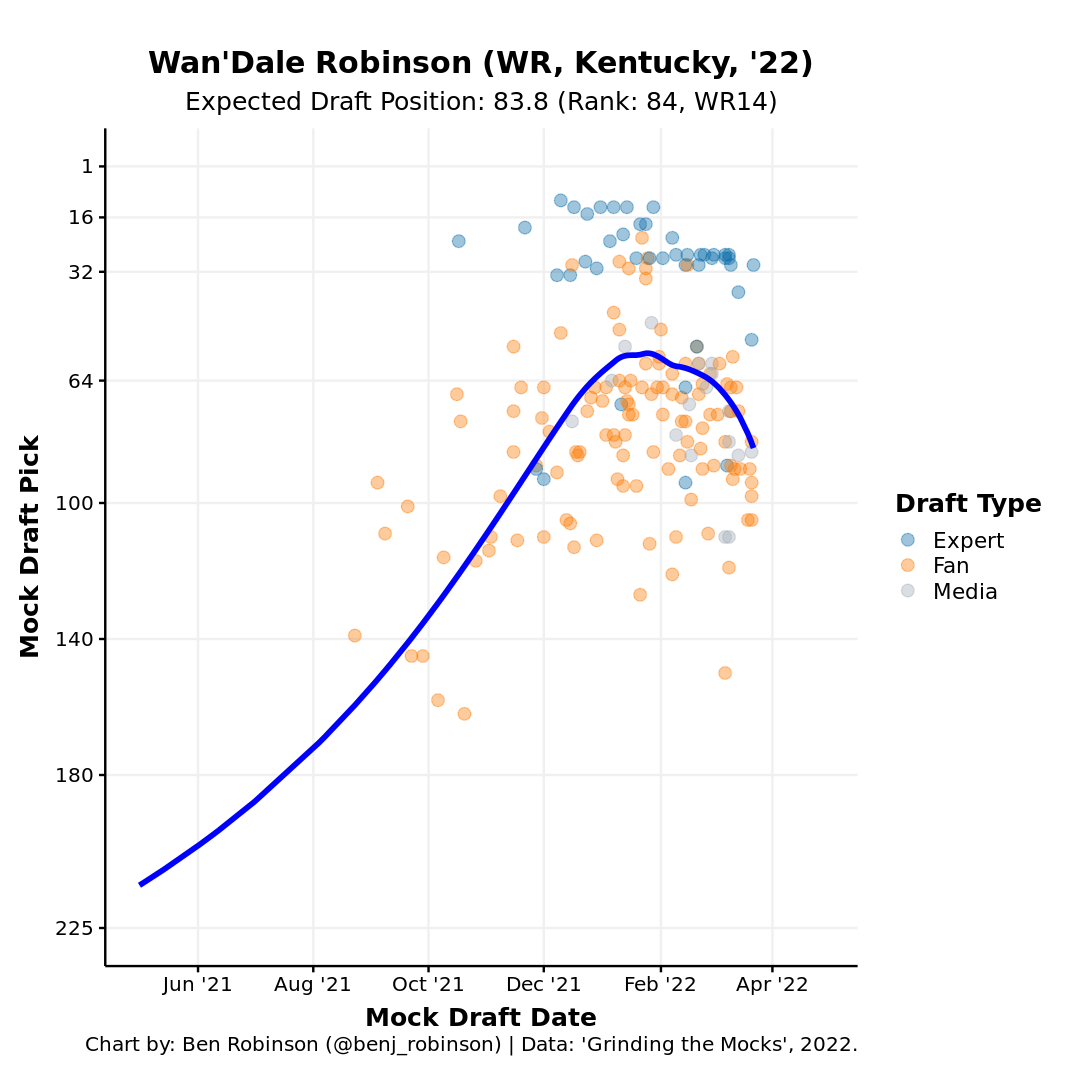Comparing current NFL draft prospects to those of years past is standard procedure in draft evaluation, though most comparisons are built on the memory recall and subjective opinion of the particular evaluator.
In this series of articles, I will compare the 2022 draft prospects to prior years and pick out the most similar comps with a clearly delineated and quantifiable method.
PFF data scientist Eric Eager has done tremendous work building college-to-pro projections, which are built off the robust college data we’ve collected since 2014 and have been applied to exercises like building an “analytics” mock draft. In this analysis, I will use some of our advanced stats for comparison but primarily rely on traditional stats to go back further and compare the 2022 prospects to draft classes since 2006.
METHODOLOGY
The comps below were derived from a two-step process. First, I converted all the most statistically relevant stats and measurables to percentiles based on the thousands of prospects who have entered the NFL since 2006.
The matching features were transformed by principal component analysis (PCA). I found the closest statistically comparable players by the Euclidean distance between the players' principle components, listed in the top 10 below.
For draft position, I’m using an estimate based on the mock data collected at GrindingTheMocks.com. The college statistical metrics for PCA are career market shares for receiving yards and receiving touchdowns, best-season market shares for receiving yards, yards per route run and yards per reception.
I also included the most important workout metrics for NFL and draft position for wide receivers: weight, 40-yard dash time and vertical jump. I’m taking the best number from either the prospects' NFL Scouting Combine or pro-day performances. If the 40-yard dash time or vertical jump are missing, I estimate them based on historical modeling with weight and available other workout metrics.
MOST COMPARABLE PLAYERS
Wan’Dale Robinson’s draft stock took a hit after the combine, though that might be an overreaction.
Draft pundits were at least as concerned about his size as his drill times, as he weighed in at only 178 pounds and his 27 5/8-inch arms were the shortest of over a thousand wide receivers in our measurement database.
The Kentucky product's expected mock draft position still hints at him being a Day 2 pick, but it's looking more likely that he falls to later in the round.

Robinson has production on his side, however. He owned nearly a 35% career team market share of receiving yards and over 45% in his best season. He also averaged a solid 3.6 yards per route run in 2021.

While Robinson is a little smaller, Jamison Crowder is an appropriate top comp. Both players aren’t particularly fast, and both are slot-heavy players. They both combine that with strong production.
The other NFL hits are Tyler Boyd and Tyler Lockett, the latter of whom plays a more downfield game, and the former was drafted much earlier than Robinson’s current expectation.
Exclusive content for premium subscribers

WANT TO KEEP READING?
Dominate Fantasy Football & Betting with AI-Powered Data & Tools Trusted By All 32 Teams
Already have a subscription? Log in



 © 2025 PFF - all rights reserved.
© 2025 PFF - all rights reserved.